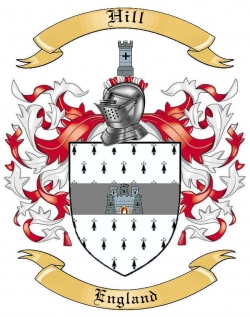Fred's Relatives and Ancestors
Where possible, information is derived from or verified with official sources, including census returns, birth, marriage and death certificates, parish records etc.
About the censuses
Census returns are subject to a hundred-year non-disclosure rule. Copies of census returns are available for public inspection for the years 1841, 1851, 1861, 1871, 1881, 1891, 1901 and 1911.
The censuses were held on the following dates:
- 1841 - 06 June
- 1851 - 30 March
- 1861 - 07 April
- 1871 - 02 April
- 1881 - 03 April
- 1891 - 05 April
- 1901 - 31 March
- 1911 - 02 April
The administration of early census returns from 1801 to 1831 was the responsibility of the Overseers of the Poor and the clergy. The information in these early censuses was used to determine population size, the occupations of the population and the condition of the housing stock. These returns were used as statistical tools.
After 1841 the administration of censuses became the undertaking of the Registrar General and the Superintendant Registrars, who were responsible for the registration of births, marriages and deaths.
In order to minimise the risk of omissions or counting people twice, it was necessary to ensure that everyone completed their census return on the same day. In order to properly manage the administration, the country was divided up into enumeration districts, based mostly on existing parishes. Larger parishes were subdivided further, and each area was allocated to a census enumerator.
Each household was supplied with a pre-printed census schedule by the census enumerators (often schoolmasters) before the predetermined census date.
Householders were instructed to complete their individual household schedules, listing the names of those who had been in their household over the period between Sunday night and Monday morning. The census enumerators then collected the household schedules the morning after the census night.
If the schedules had not been properly completed, the enumerator was supposed to ask for extra details at the doorstep, although it is clear that this was not done uniformly. If the householder was unable to fill in the schedule, perhaps because he or she was illiterate, the census enumerator was to fill it in for them. This means that the enumerator had to rely on transcribing spoken words, which will have resulted in some miss-spelling of names.
These individual household schedules - which, with the exception of the 1911 census, have since been destroyed - were then transcribed into the census enumerators' books, together with statistical information, and it is from these books that copies of the census returns can be obtained. The 1911 census is different in that the actual household schedules as completed by the homeowner are available for inspection.
With the exception of the 1841 census, the age shown is the age recorded by the enumerator. In the case of the 1841 census, the age for anyone aged 15 or over was rounded down to the nearest 5 years. e.g. an entry of 15 means aged from 15 to 19; an entry of 20 means aged from 20 to 24, etc.
Origins of Surname 'Hill'
English and Scottish: extremely common and widely distributed topographic name for someone who lived on or by a hill, Middle English hill (Old English hyll). English: from the medieval personal name Hill, a short form of Hilary (see Hillary) or of a Germanic (male or female) compound name with the first element hild ‘strife’, ‘battle’. German: from a short form of Hildebrand or any of a variety of other names, male and female, containing Germanic hild as the first element. Jewish (American): Anglicized form of various Jewish names of similar sound or meaning. English translation of Finnish Mäki (‘hill’), or of any of various other names formed with this element, such as Mäkinen, Heinämaki, Kivimäki.
Hill Family Crest

Hill Family Motto
Motto: Avancez Motto translation: Advance